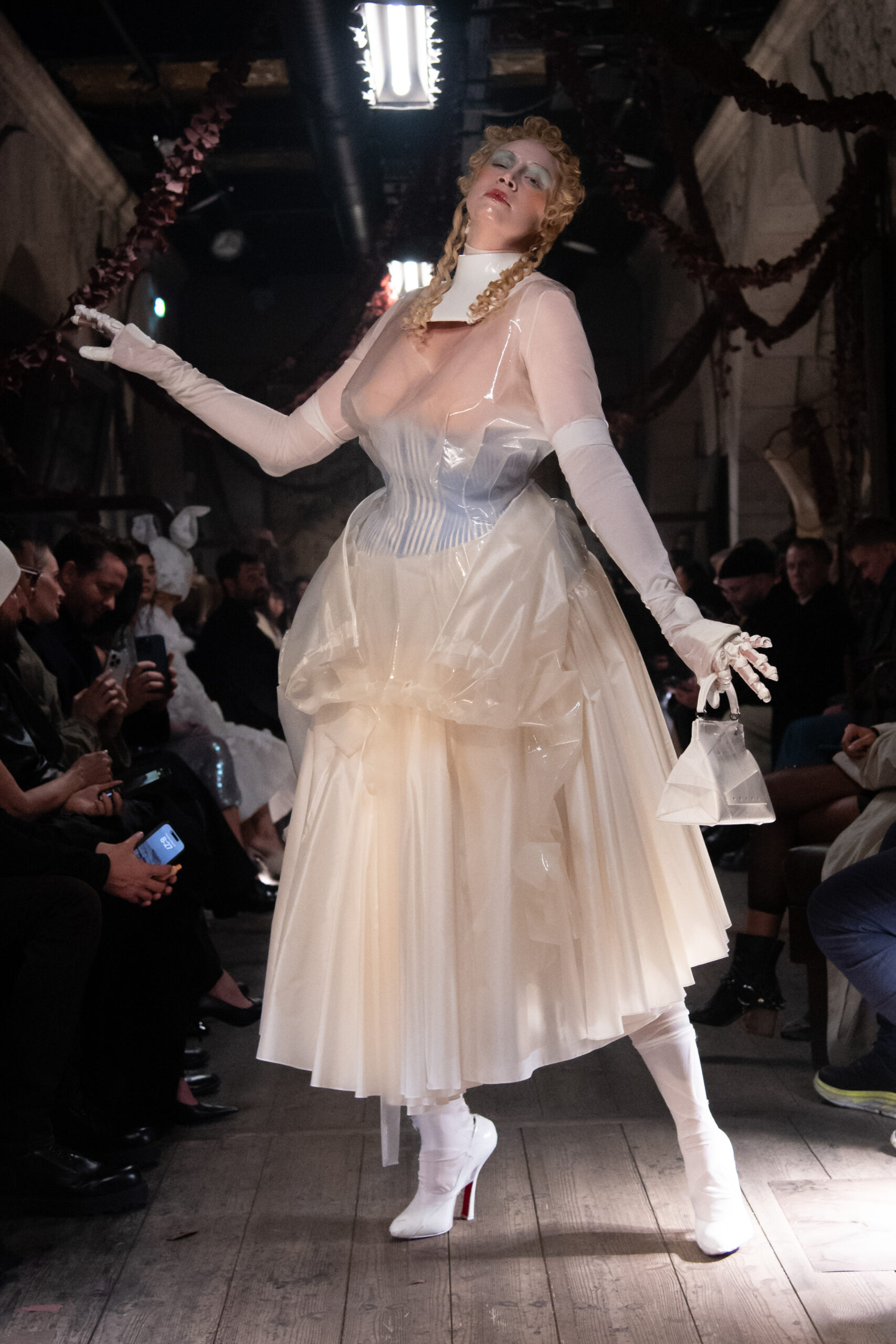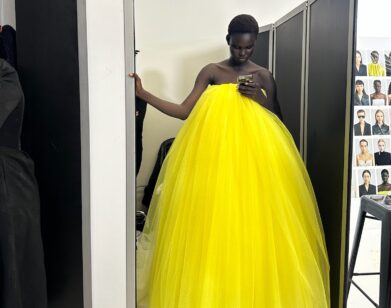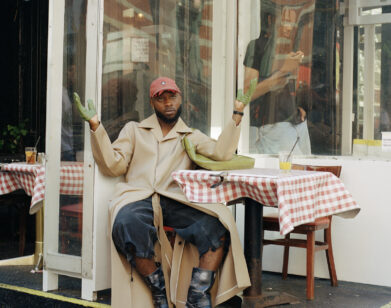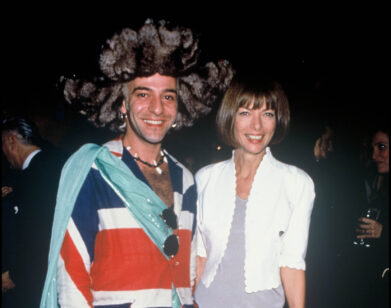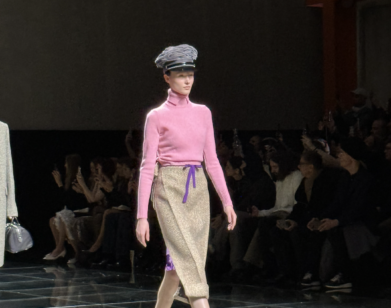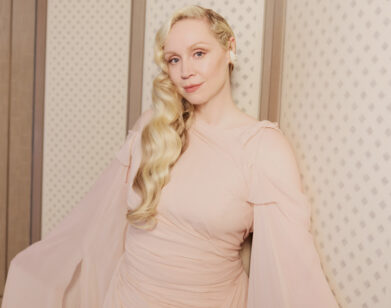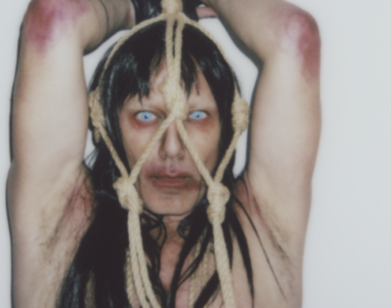CATWALK
Meet Pat Boguslawski, the Movement Director Behind Margiela’s Viral Couture Show
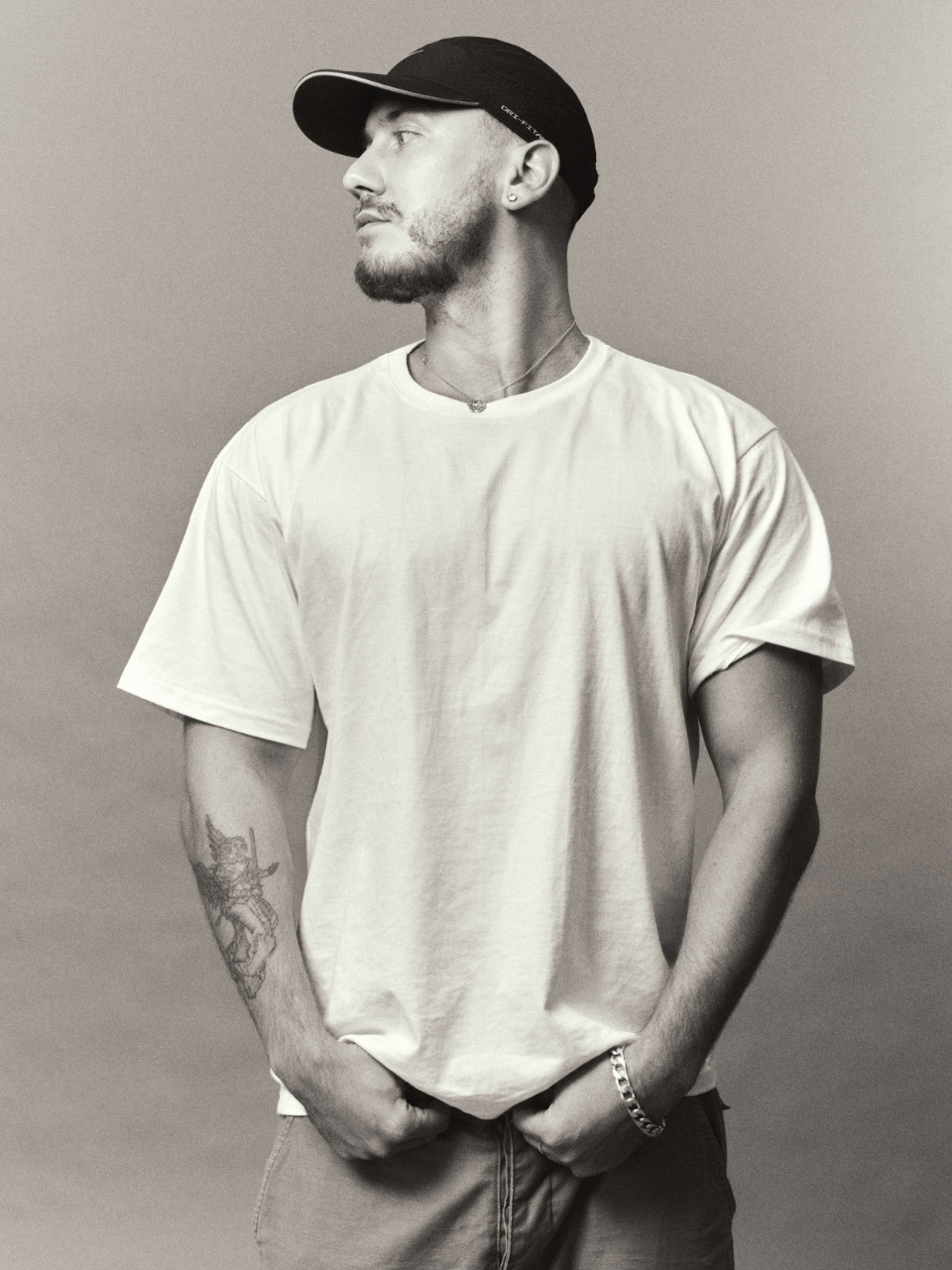
Pat Boguslawski, the model, dancer, and actor responsible for Leon Dame’s viral runway walk in 2020, and now, the sultry characters that took to Seine for John Galliano’s history-making 2024 Maison Margiela couture show, called up our senior editor Taylore Scarabelli to reveal the method behind his boundary-pushing movement direction.
———
TAYLORE SCARABELLI: How are you feeling after the show?
PAT BOGUSLAWSKI: I feel really good. I was very exhausted this weekend, but I’m happy.
SCARABELLI: I hope you got to celebrate a little. It was a great show.
BOGUSLAWSKI: Oh, thank you so much.
SCARABELLI: Have you seen any of the videos of kids trying to recreate the walk on TikTok?
BOGUSLAWSKI: I heard about that. But I don’t have a TikTok, I just have Instagram.
SCARABELLI: It’s cute. Well, I wanted to start by asking you just a couple questions about the show and then we can talk about your experience working as a movement director. Obviously you’ve been working with Galliano at Margiela for a while now. What were the notes you were given initially in terms of the direction for the show?
BOGUSLAWSKI: Obviously John talked to me about the mood and he showed me the collection and he just explained to me that it’s five A.M., it’s a full moon, it’s rainy, and they need to feel exhausted and cold. And I was just like, “Okay, you got it.”
SCARABELLI: They’re on their way home?
BOGUSLAWSKI: Or maybe going to a bar. I was trying to make sure that everyone looks super organic and real, and we obviously created a lot of different characters. So it was my job to make sure that everyone looks super confident and they know how to perform and act and walk in those clothes and corsets and heels. We had a lot of fun, trust me.
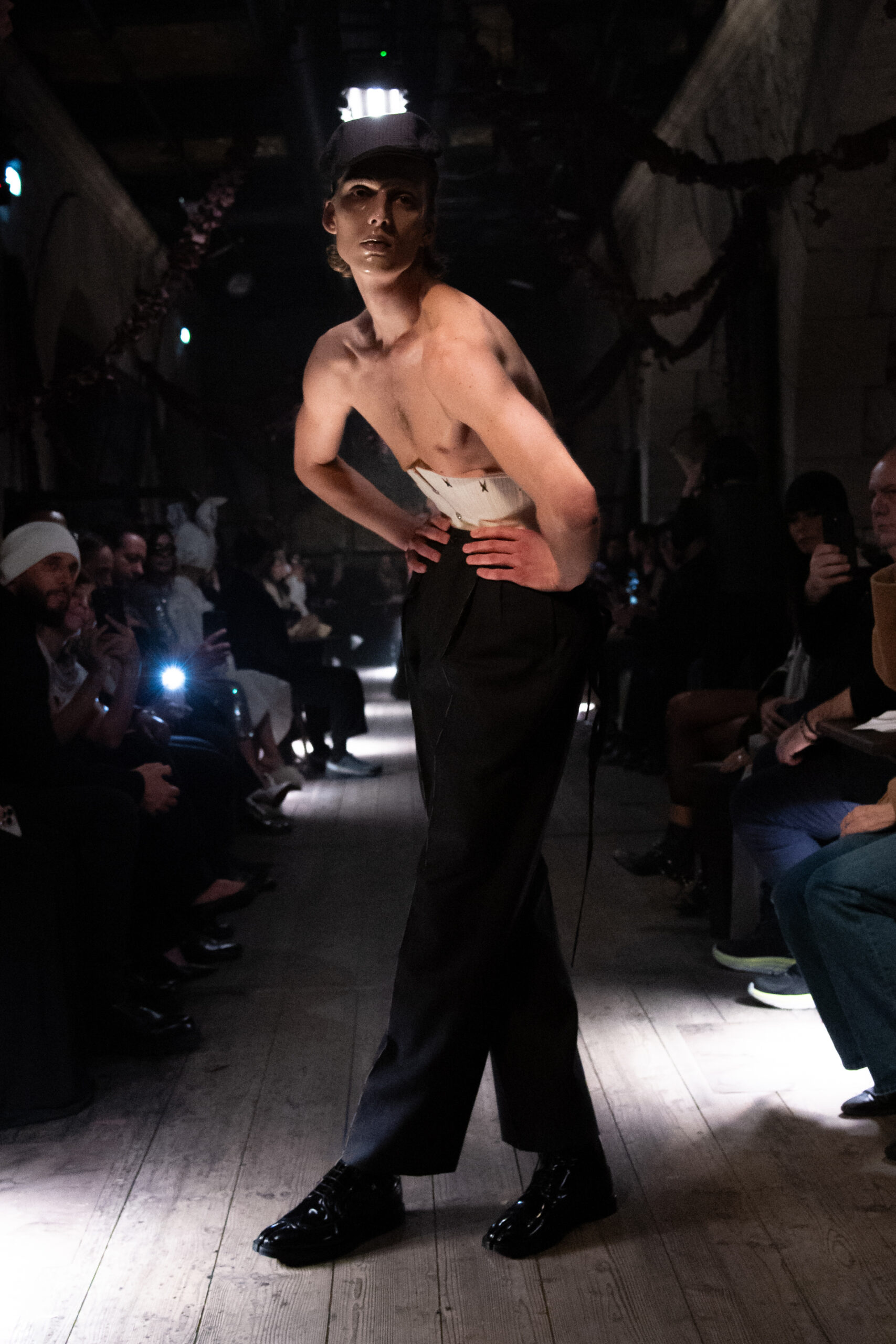
SCARABELLI: Oh, I’m sure. I mean, the opening look on Leon [Dame] was so gorgeous and his walk was so expressive and dynamic—
BOGUSLAWSKI: Yeah, it’s very rare to meet someone who is so talented and so brave and so committed to do a good job. He’s got everything that it takes to become a supermodel. He’s a real performer, so he takes directions really well. He practices a lot, but at the same time, he has a talent.
SCARABELLI: Can you tell me about his character for this show?
BOGUSLAWSKI: I don’t know if I have enough information to talk about his character, but we tried to match his walk to the video that was shown to the audience before the show where he was escaping, so we decided that he’s just going to run into the space. You can see at the beginning that he’s stopping and breathing heavily, and then it turns into a walk, and then he creates this beautiful pose in front of the camera, and then he goes into the bar, and he starts experiencing everything that is around him. What’s so cool about Leon is that he’s just not scared. He can get so close to the audience and look into people’s eyes, and I love that. And the fact that he is just doing it so naturally is amazing. You don’t need to ask him twice. He’s just like, “Okay, cool, let’s go.”
SCARABELLI: It was almost like he was propositioning the editors in the front row, which I thought was quite cool and transgressive to see on a runway.
BOGUSLAWSKI: Obviously we choreographed it, but at the same time, it’s a show. And when adrenaline kicks in, you might be doing different things. Once they’re out there, they ‘re doing anything they want, in their characters, obviously, because if we told them, “You have to do this exactly like this,” that’s not going to be enjoyable for them or for us to watch because it’s going to feel choreographed. We want it to feel natural.
SCARABELLI: So you are a trained actor, are there any specific notes you give to the models in terms of acting tips?
BOGUSLAWSKI: Of course. We prepare before the show and then, before they go out on the runway, I’m there next to John and I give them notes because sometimes they’re stressing, they’re panicking a little bit inside. I need to make sure that until the very end, they are in the character. It’s like being on a stage in the theater.
SCARABELLI: I’m sure a lot of the models aren’t used to that, actually. There are not a lot of theatrics in fashion today.
BOGUSLAWSKI: Absolutely not. But it is what it is.
SCARABELLI: You’re working on it. [Laughs]
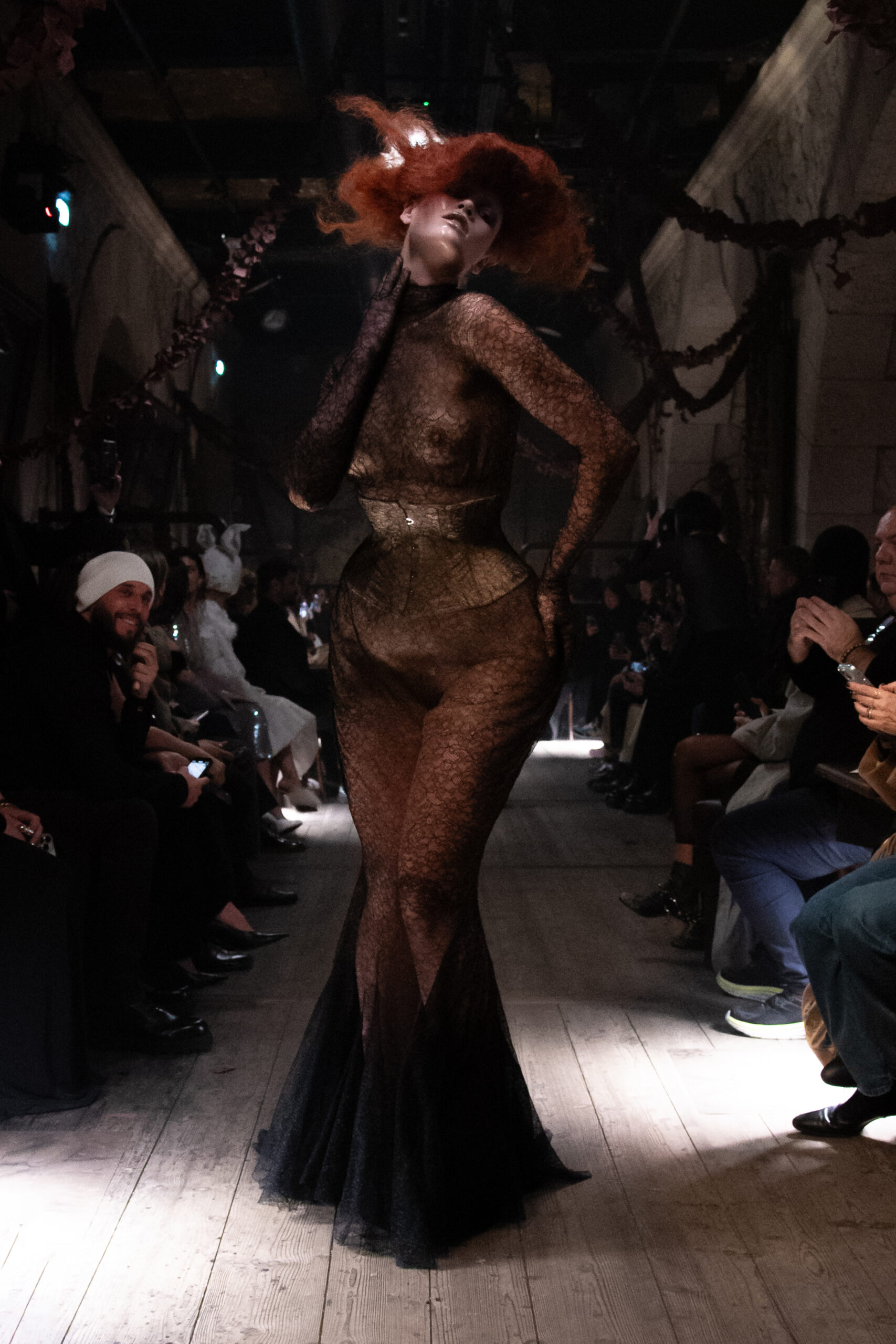
BOGUSLAWSKI: That’s my job, because I grew up watching all these shows as a kid in the nineties and early 2000s when there was more freedom. So when I started working in fashion, I was just like, “What’s going on? Why is everybody walking like a mannequin?” There was no feeling. Everything was just about the product and the clothes. And I was just like, “I’m so bored of that.” So when I started doing my job, I promised myself that I’m going to bring back those emotions and movements and make sure that I create something fresh and modern. I think I achieved my goals.
SCARABELLI: Was that something that you were bringing to the table yourself when you were working as a model?
BOGUSLAWSKI: In fashion, I started as a model, but I was a dancer already in L.A. and London, and then they scouted me and I walked the McQueen show. We were doing rehearsals, and Sarah [Burton] stopped us and grabbed my hand and said, “Thank you so much. You’re the only one here who gets the mood and the way you walk. It’s so amazing. Can you teach the other models how to walk?” And I was just like, “What are you doing? They’re going to hate me. We can’t do this.” And she’s like, “No, I’m going to play the music and you just going to walk for everyone here.” I think that was maybe the first time when something kind of clicked in my brain and I thought, maybe I should do this in the future. But I hated telling people that I work as a model, I felt more like a performer or an actor, even working in fashion. Because for me, coming on set and creating character was the most fascinating thing about modeling. I was so bored of just putting clothes on and feeling empty. I wanted to create something more meaningful. And I wanted to become different characters. It was very obviously tricky to achieve just because not every shoot wanted that from me or expected that from me. But it was fascinating just being able to perform.
SCARABELLI: Do you have any insight into why you think the fashion industry shifted so drastically in terms of the type of models they were casting or the type of movement people were looking for? I would say, in the 2010s, around the time that you started, theatrics were not very sought after in fashion.
BOGUSLAWSKI: It’s hard to tell, but maybe people just got bored of it. 14 years ago people didn’t care so much about how the model performed in front of the camera, the main focus was the product. And obviously the nineties was more about the models, because the main thing was, “Who are we going to look at and what are they going to do?” And then it became about, “What we are going to sell and how are we going to sell it?”
SCARABELLI: Yeah, I don’t know if we’re really moving out of it, but we’re living through a time of logo mania and memetic fashion where it’s just punchy in your face stuff that almost doesn’t require any kind of performance from the person carrying it, just because the clothing itself is so loud. And I think the show was so impactful because, I mean, yes, these were couture looks, but they weren’t so in-your-face, they were part of a bigger fantasy. And I think that’s something we’re just really thirsty for right now because we don’t really see the kind of world building that we used to see in the nineties. I was wondering, what were your references for this show, whether that be looking at old Galliano shows or films or dance?
BOGUSLAWSKI: I wasn’t doing any research before this show especially. I just saw the collection and I had a meeting with John and then I saw the space, I heard the music, and I just started making things. That’s my research. That’s all I need.
SCARABELLI: You already have your Rolodex in your head.
BOGUSLAWSKI: Yeah. It’s like when you’re an actor, you just have a monologue and then you start trying to find it. Trying to be practicing in front of, I don’t know, a mirror or maybe a home, and you’re just doing it all over again until it sounds right and it feels right. And I think the same here. We just tried a lot of different things until it felt right.
SCARABELLI: Right. Also I have to say Gwendoline Christie was so fantastic. Was it different working with her than working with the other models?
BOGUSLAWSKI: Of course. She’s a professional actor so she was looking at it as a role from the very beginning. I also studied acting, so I knew how to communicate with her, that character, and how to have a conversation about what she should do and what she should feel. But obviously I am very physical, so I was showing her on my body and also on her body what she should do. But she’s such an easygoing person and she was so excited to do it that we had such a good time working together.
SCARABELLI: Fab. Did you have a favorite look or moment from the show?
BOGUSLAWSKI: I think the most beautiful moment was actually seeing people’s reactions. When you see people crying watching this show or screaming and shouting, “We want more.” That is something that you’ll never forget. And a lot of people were also crying backstage because they were so happy that they created something genius. I think that was my favorite part of the show, just being able to work with such an incredible team and get the trust freedom from John. Being around him and learning from him is the biggest gift.
